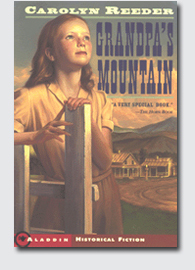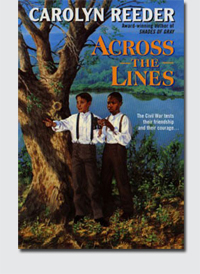Recently I’ve seen some some discussion about IWBs (interactive whiteboards) on Twitter. Having been coming and going sporadically in Twitter for quite a while now, I don’t really know the issues being talked about–I have just picked up that there is a yeah, “we’re for them” group, and a “no, we’re not” group. The latest comment I saw was @Tom Whitby’s tweet, “Plz read & comment: My Latest Post: IWB’s Help or Hurt? http://bit.ly/86CKmb #edchat #education #edtech” to which I responded,”@tomwhitby An IWB is inanimate… it’s what the teacher does with it that makes a diff–and helps or hurts what? #edchat #education #edtech
So,in reading the tweets referencing IWBs, I can’t help but think about one of my early experiences on Twitter–where @Betchaboy (Chris Betcher, from Australia), asked for IWB stories for a book he and a friend were writing. 🙂 I contacted him and offered to share a story-and it was indeed printed in the book, The Interactive Whiteboard Revolution.
With the intent of getting involved in the conversation, I’m reposting it here as I sent it to Chris in October, 2008. As I recall, it was somewhat edited in the book, but don’t have the book here with me to check.
Students may like the “interactivity” of IWBs, but the communal engagement of using them is most powerful. Typically, students fill in the blank or answer closed questions on IWB notebook activities teachers find or create, with the IWB simply being a big touchscreen where kids compete to show they know the correct answer. As I plan, I search for ways that the technology changes the task or increases the depth of how the task is understood or completed. I also consider the potential for thoughtful conversations.
Influential activities I use involve co-editing or co-creating a product to meet specific goals. Many teachers I work with use “Editor in Chief” where students read, edit and (sometimes) recopy in their best handwriting the edited text. When “Editor in Chief” is done on the IWB, students observe peers modeling their thinking about the mistakes made and how to correct them. I often see an increase in intellectual risk-taking as students become willing to share in order to have a turn to use the IWB. They actually clamor to edit!
Discussing student strategies and options for revision are also much easier than when students simply read their text aloud, describing what they did. The IWB allows for and promotes engagement through a variety of learning modes.
Another powerful activity involves teaching students summarizing and notetaking, a high yield strategy identified by Robert Marzano. My students examine a text (often wikipedia entries, so we can explore authenticity and accuracy) about a historical event, such as “. . . the importance of the American victory at Yorktown.” (VA SOL Virginia Studies 5.c)
We display the Seige of Yorktown wikipedia text on the IWB, with 2 students having airliners. The rest have their textbooks/laptops and history journals. I like the airliners (a wireless slate connected to the display computer through Bluetooth technology) because, with the slate, students control the IWB from wherever they are in the room. Working from their seat puts the emphasis on the text on the IWB, not the person in front activating the board.
As everyone silently reads the text, they note vocabulary that may be an issue for or interesting to them. Students without airliners attempt to condense the text into one sentence or main idea. Concurrently, one “airliner pilot” is using colored pens to mark up the text on the IWB as the second pilot watches. The goal is to make learning and thinking transparent, and the use of the IWB facilitates this by allowing students to see what other students are doing, AS THEY ARE DOING IT. As students finish their independent work, they, too, watch the first pilot who is using the airliner and IWB to make their thinking transparent.
We probe why pilot #1 did what s/he did, and others naturally chime in to describe their process. When we have finished probing, we all contribute as pilot # 2 attempts the same two tasks (with more information and having had instruction), now synthesizing and evaluating everything that has been said and done to this point. Doing this twice supports another of Marzano’s strategies, reinforcing effort and providing recognition. Working, thinking, talking and learning together, we encourage each other to provide recognition for work well done, as we comment upon, agree or disagree and improve our understanding of essential content and effective summarizing. The way we use the IWB is integral to this process of thinking and collaboration.
We then reflect upon condensing the entry into one sentence, discussing the efficiency, effectiveness and support for understanding that provides. Marzano’s research shows that students should substitute, delete and keep some things as they use the basic structure of the information presented. Using the IWB allows us, as a group, to work on the structure of the text, comparing and contrasting our first activity of a “one sentence summary” to collaboratively creating a more effective summary.
When students share their processes and strategies, other students hear what they are looking at, paying attention to and the connections they make as they read and work. Sharing this “thinking about their thinking” provides models for less experienced students to note that successful summarizers pay attention to things such as text features, the connections a reader makes (whether it be self to text, text to text, or text to world, etc.) and the vocabulary in the text so that they can use it or find synonyms as they restate the material in their own words.
Students learn to question what is unclear, seek clarification and analyze a text/topic to uncover what is central, restating it in their on words. Using the IWB to scaffold students observing, talking about and reflecting upon their own process supports deeper understanding. As we finish this lesson by collaboratively creating a clearly stated summary of our text, students noticeably show their increased understanding of summarizing, and we all acknowledge that having the IWB as a tool helped tremendously!
There are some other great examples in the book, so if you can get your hands on it, it is worth reading.
Now, having said all that and describing some ways to use an IWB well (I think), let me say I don’t use one in my classroom. It’s simply too hard to go get it, set it up and plan out how to use it in powerful ways. I prefer to use the SmartBoard notebook software with my airliners and an LCD projector hooked to my computer–no need for the big board, or the time it takes to get it and set it up.. 🙂 I also think it promotes the sage on the tage rather than collaboration and I prefer hands on work in small groups. I also think we can do a lot of what I’d think of doing with other tools online that are just as good, more easily accessible and not space hogs. So, I guess I’d have to join the group I referenced above that says “no, we’re not for them.”
Now, catch me up and challenge my stance. Please.


